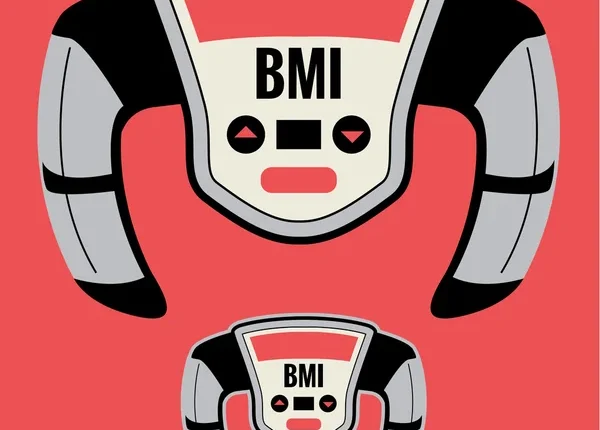Get to know “How to Calculate BMI in Kilograms and Height” Body Mass Index (BMI) is a widely used metric to assess an individual’s overall body composition and health. It provides a quick and easy way to estimate whether a person has a healthy weight for their height. Calculating BMI in kilograms and height involves a straightforward formula, but understanding the significance of the result and its limitations is crucial. In this article, we will delve into the intricacies of BMI, explore the mathematical formula behind it, and discuss its relevance in the context of health assessment.

What is BMI?
Before we delve into the calculation process, it’s essential to grasp the concept of BMI. Body Mass Index is a numerical value that quantifies the relationship between a person’s weight (in kilograms) and their height (in meters). It is primarily used to categorize individuals into different weight classes, which are associated with various health implications.
The BMI Formula
The formula for calculating BMI is deceptively simple:
BMI = weight (kg) / height^2 (m^2)
Here, weight is measured in kilograms, and height is measured in meters. To calculate BMI in kilograms and height effectively, follow these steps:
- Measure Your Weight: First, weigh yourself on a calibrated scale to get your weight in kilograms. Ensure that you use a reliable and accurate scale for precise results.
- Measure Your Height: Stand straight against a wall and use a stadiometer or ruler to measure your height in meters. Make sure you take off your shoes for accuracy.
- Square Your Height: Square your height by multiplying it by itself (height^2). This step is crucial because BMI compares your weight to the square of your height, emphasizing the relationship between the two.
- Calculate Your BMI: Divide your weight in kilograms by the square of your height in meters. The result is your BMI.
Let’s break down this process with an example:
Example: Suppose your weight is 70 kilograms, and your height is 1.75 meters.
BMI = 70 kg / (1.75 m)^2 = 22.86
Your BMI is approximately 22.86.
Interpreting BMI Results
Now that you know how to calculate BMI in kilograms and height, it’s essential to understand the meaning of your result. BMI values fall into specific categories that help assess an individual’s weight status. These categories typically include:
- Underweight: BMI < 18.5
- Normal Weight: BMI 18.5 – 24.9
- Overweight: BMI 25 – 29.9
- Obesity (Class I): BMI 30 – 34.9
- Obesity (Class II): BMI 35 – 39.9
- Obesity (Class III): BMI ≥ 40
Your BMI result indicates where you fall within these categories. However, it’s important to note that while BMI provides a quick snapshot of your weight status, it doesn’t take into account other factors like muscle mass, bone density, or distribution of weight. Therefore, it should be viewed as a starting point for assessing health and not as a definitive measure.
Limitations of BMI
BMI has several limitations that are important to consider when interpreting the results:
- Doesn’t Distinguish Between Muscle and Fat: BMI doesn’t differentiate between muscle mass and fat mass. This means that individuals with high muscle mass may have a higher BMI, even if they are not overweight or obese.
- Ignores Body Composition: BMI doesn’t consider where fat is distributed in the body. Central obesity (fat around the abdomen) is more closely associated with health risks than fat stored in other areas.
- Age and Gender Differences: BMI may not be equally applicable to people of all ages and genders. It may not accurately assess the health of older adults or athletes.
- Doesn’t Account for Ethnic Variations: People from different ethnic backgrounds may have different health risks associated with the same BMI.
- Lacks Information About Health Indicators: BMI alone doesn’t provide information about other health indicators such as blood pressure, cholesterol levels, or glucose levels.
Using BMI as a Screening Tool
While BMI has its limitations, it remains a valuable tool for quickly assessing the general health status of a population. It is particularly useful in large-scale health studies and epidemiological research, where it provides a simple and cost-effective method for categorizing individuals by weight status.
Moreover, BMI can be an initial step in identifying individuals who may benefit from further health assessments. For example, if someone has a high BMI, it may prompt healthcare professionals to conduct more comprehensive evaluations, including measurements of body fat percentage, waist circumference, and blood tests.
Beyond BMI: Considering Additional Factors
For a more comprehensive assessment of your health, it’s essential to consider additional factors alongside your BMI. These factors include:
1. Waist Circumference
Measuring your waist circumference can provide insight into the distribution of fat in your body. Central obesity, indicated by a high waist circumference, is associated with an increased risk of health problems like cardiovascular disease and type 2 diabetes.
2. Body Composition
Assessing your body composition, including the percentage of muscle mass and body fat, offers a more detailed picture of your overall health. Techniques such as dual-energy x-ray absorptiometry (DEXA) and bioelectrical impedance analysis (BIA) provide accurate measurements.
3. Blood Pressure
Monitoring your blood pressure is crucial for assessing your cardiovascular health. High blood pressure is a significant risk factor for heart disease and stroke.
4. Blood Lipids
Evaluating your cholesterol levels and triglycerides through blood tests can help identify your risk of heart disease.
5. Blood Glucose
Regular blood glucose testing is essential for individuals at risk of diabetes or those with a family history of the disease.
6. Family History and Lifestyle
Consider your family history of health conditions and your lifestyle choices, including diet, physical activity, and smoking habits. These factors play a significant role in your overall health.
Conclusion
Calculating BMI in kilograms and height is a straightforward process that provides a quick estimate of your weight status. However, it’s important to remember that BMI has limitations and should be viewed as one piece of the puzzle when assessing your overall health.
To gain a more comprehensive understanding of your health, consider additional factors such as waist circumference, body composition, blood pressure, blood lipids, blood glucose, family history, and lifestyle choices. These elements, when evaluated together, offer a more accurate and personalized assessment of your well-being.
In summary, while BMI is a useful tool for population-level health assessments and initial screenings, it should not be the sole determinant of your health. A holistic approach to health, taking into account various factors, will provide a more complete picture of your overall well-being.
Read Related Also: Boosting Your Nutrition with Fall Produce: Insights from a Registered Dietitian







3 comments
Comments are closed.